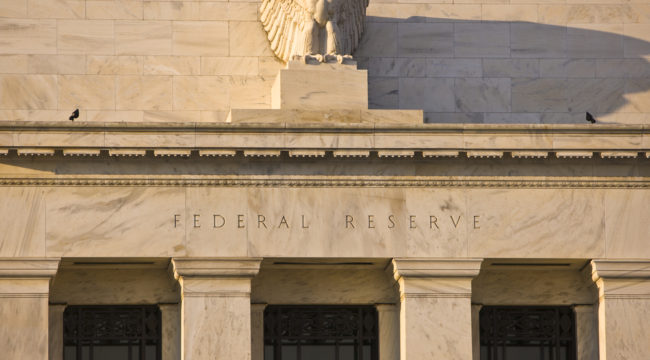The Fed Gets Blindsided... Again
The big news this week was that the House of Representatives impeached President Trump for abuse of power and obstruction of Congress.
Trump now joins Andrew Johnson and Bill Clinton as the only U.S. presidents to be impeached (Nixon resigned before he could be impeached).
Now it goes to the Senate for trial. But there’s virtually no chance the Senate will convict Trump on the charges, given the Republican majority.
The market has completely shrugged off the news. The stock market is up today, which tells you it doesn’t fear political instability or expect anything to come of the impeachment process.
But the real market story right now on Wall Street has to do with the Fed, and it’s not getting anywhere near the attention it deserves.
Since September, the Fed’s been pumping in massive amounts of liquidity into the “repo” markets to keep the machinery of the financial system lubricated.
So far, the figure stands at about $400 billion. But it’s showing no signs of slowing down.
The Fed has now announced it will provide an additional $425 billion of cash injections into the repo market as the year draws to a close on concerns that funding could fall short into year’s end.
And Jerome Powell has admitted these injections will continue “at least into the second quarter” of 2020.
What does all this bailout money say about the health of the money markets?
And that’s really what it is — a bailout. Without Fed intervention, liquidity in these markets would have dried up.
But the Fed’s massive liquidity injections are basically a Band-Aid on the real problem.
There’s plenty of liquidity in the market right now. The real problem is that the big banks, the 24 “primary dealers” who have direct access to the Fed’s liquidity, aren’t lending the money out like they’re supposed to.
They’re sitting on it, which is depriving other banks and financial institutions of the short-term funding they need.
Part of it has to do with regulations that require these banks to hold a certain amount of reserves, so they’re reluctant to lend them.
But it’s also because these banks can earn more on their money by parking their reserves at the Fed than they can lending it out, which pays very little interest.
Here’s what one portfolio manager, Bryce Doty, says about it:
The big banks are just hoarding cash. They told the Fed they have more than enough cash in excess reserves to meet regulatory issues, but they prefer having money at the Fed where they can still earn 1.55%, rather than in the repo market.
So, until that situation changes, there’s no reason to expect that the Fed’s support will go away anytime soon.
But if you ask New York Fed head John Williams, everything’s just hunky-dory.
He says it’s all “working really well.” But the Fed is having to expand its balance sheet at the fastest pace since the first round of QE began in December 2008.
It’s gone from $3.8 trillion in September to over $4.07 trillion today. And it’s going higher.
Would all this be necessary if the system were working well?
The Federal Reserve’s Board of Governors recently published its annual Supervision and Regulation Report, which measures the financial condition of major U.S. banks, including loan growth and liquidity in the banking system.
How did the banks grade?
Overall, the board concluded that 45% of U.S. banks with more than $100 billion in assets merited a rating of “less than satisfactory.”
Tellingly, the report did not say which banks have these less-than-satisfactory ratings. It doesn’t want to make any real waves, after all. The entire system depends on confidence.
Of course, the Fed didn’t see problems in the repo market coming at all. They never do. All they ever do is react and pretend that they have everything under control.
Basically, the Fed was blindsided… Again.
But they don’t have everything under control or they would have seen the problems coming and maybe done something about it.
Continued problems in the repo market may mean the Fed could launch another round of official quantitative easing in the very near future, possibly as soon as early January.
The good news for the markets is that the Fed’s liquidity injections have helped boost stocks to record levels again.
The Fed is basically handing investors a Christmas present. Unfortunately, most people on Main Street don’t realize it. The present’s being put under the tree this year (and maybe next) won’t last. They can’t.
Regards,
Nomi Prins
for The Daily Reckoning



Comments: